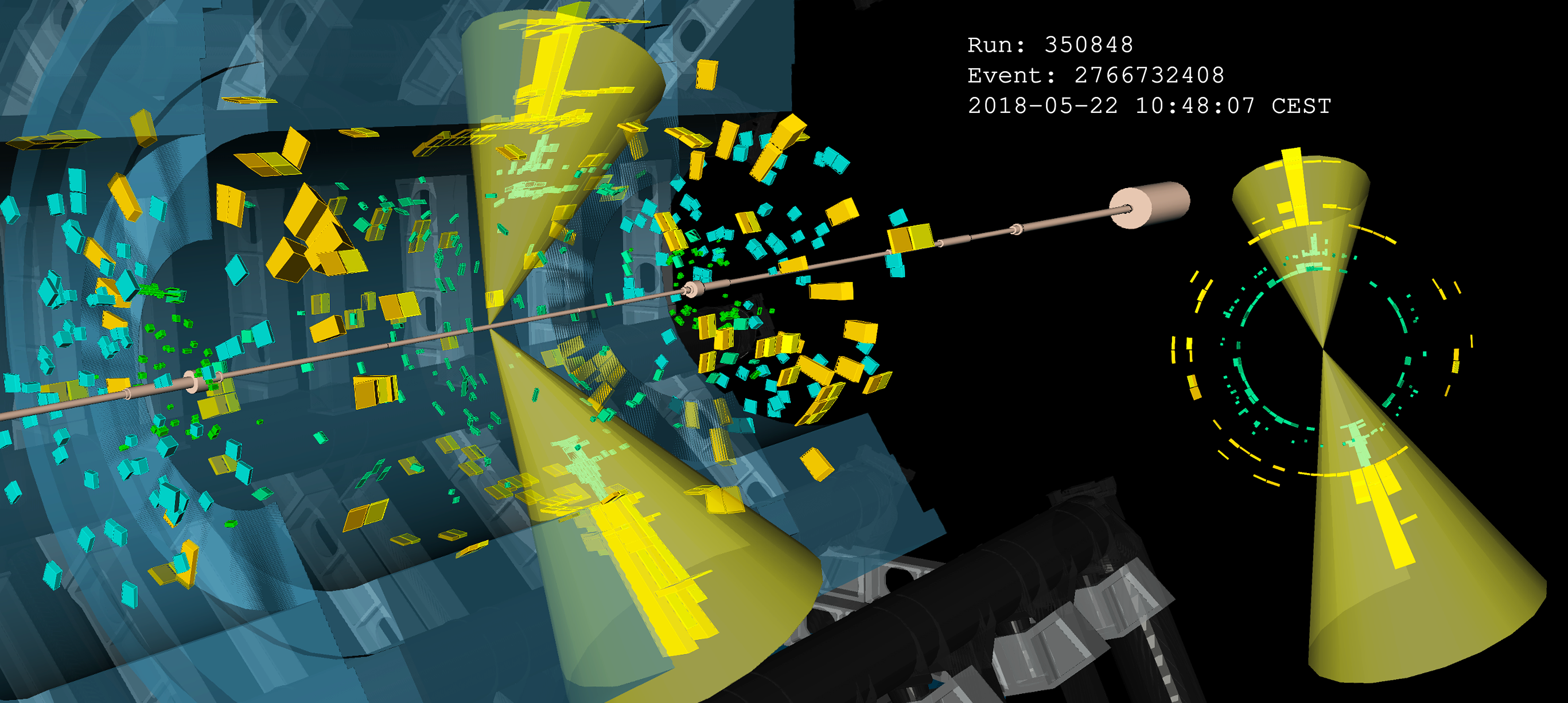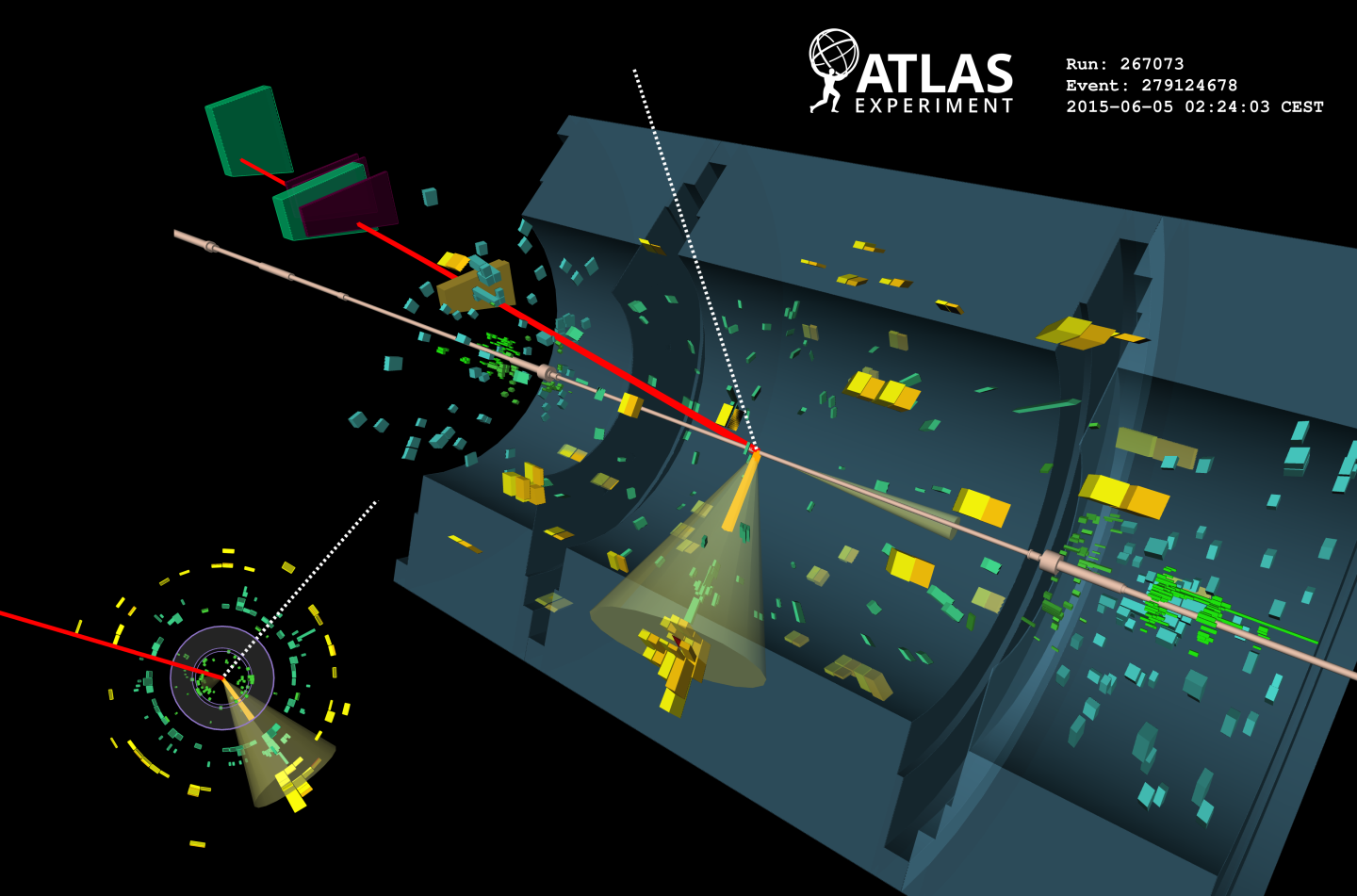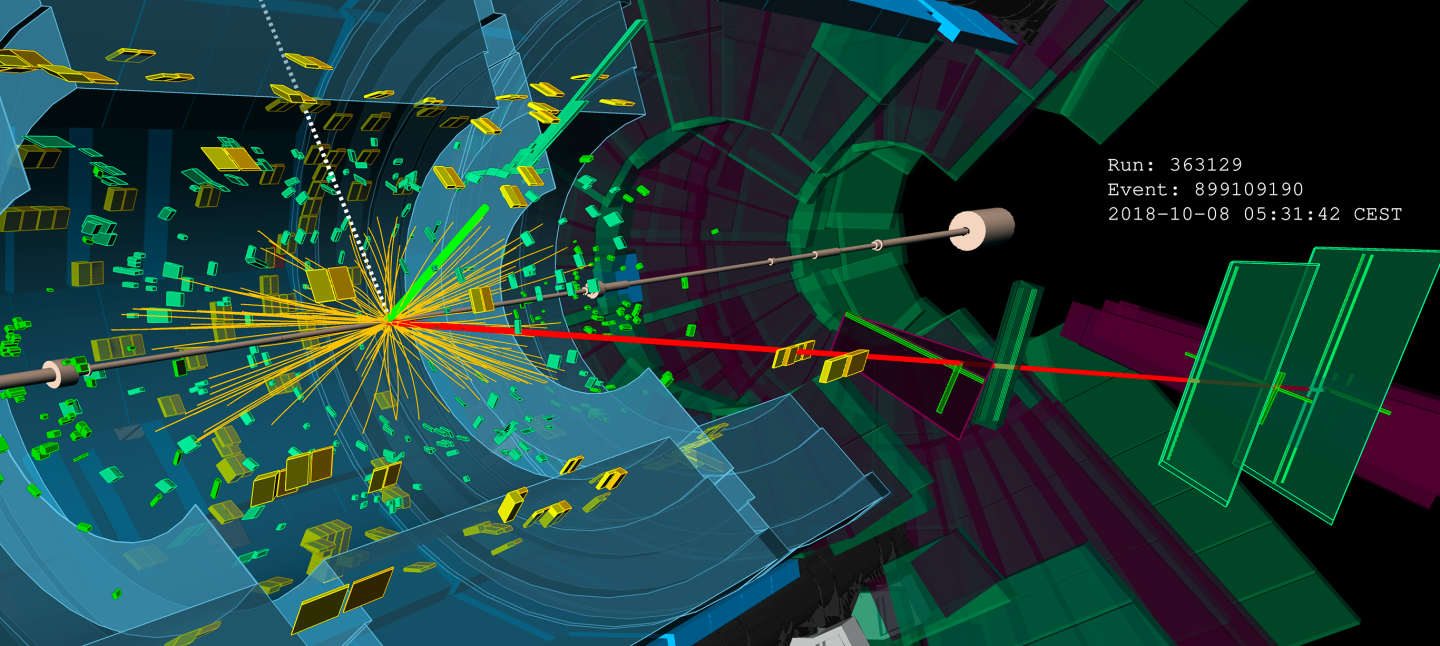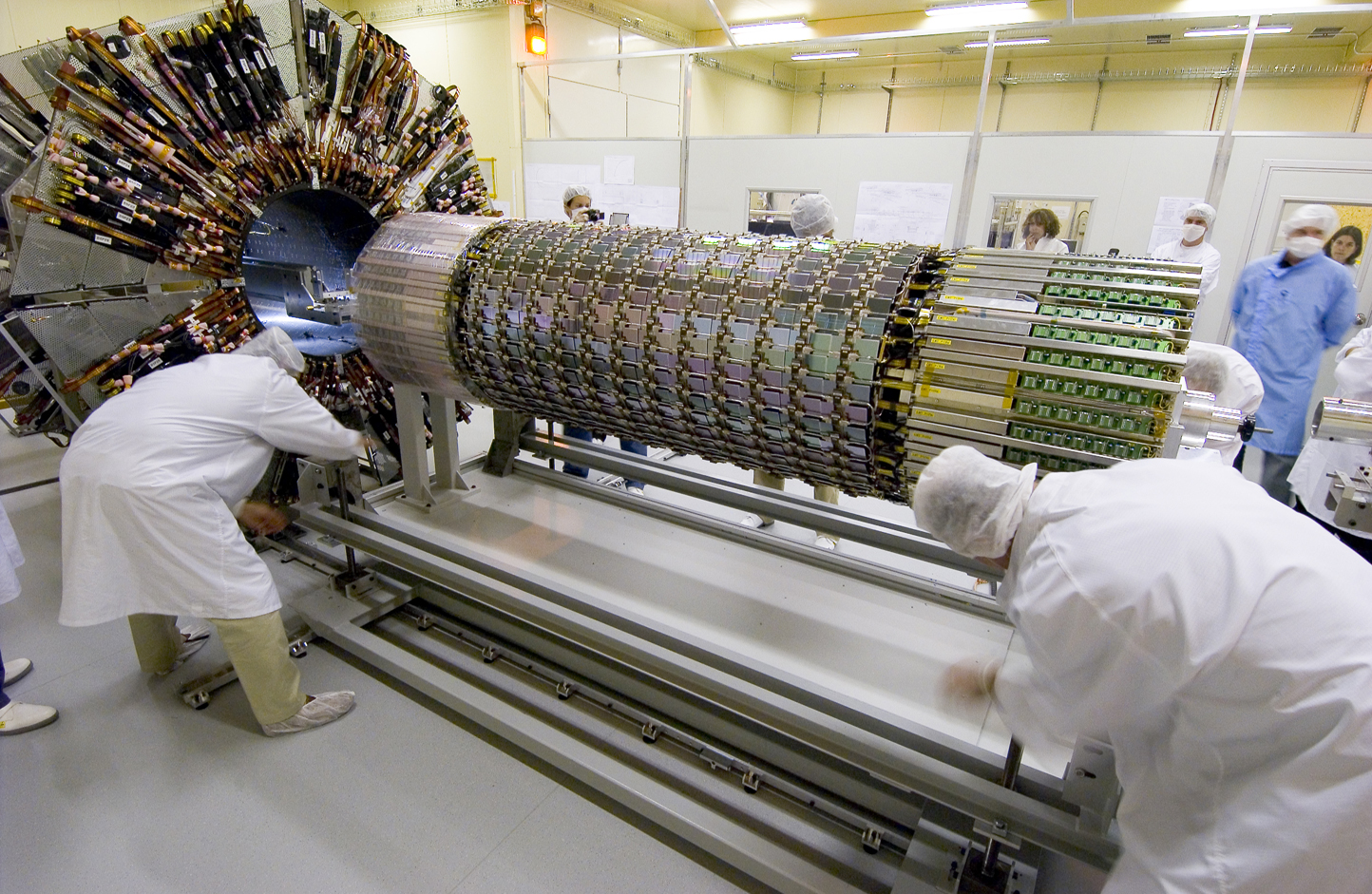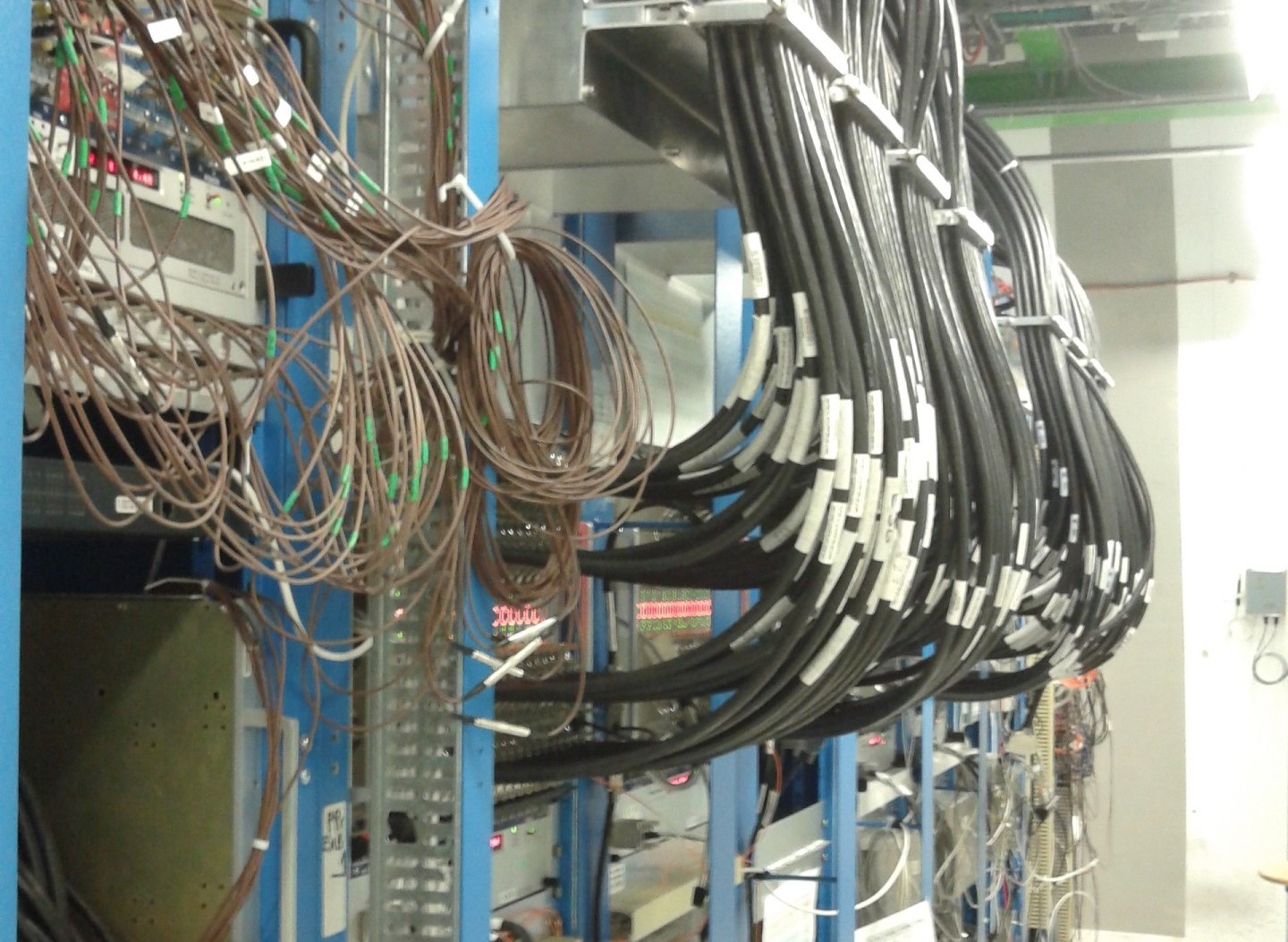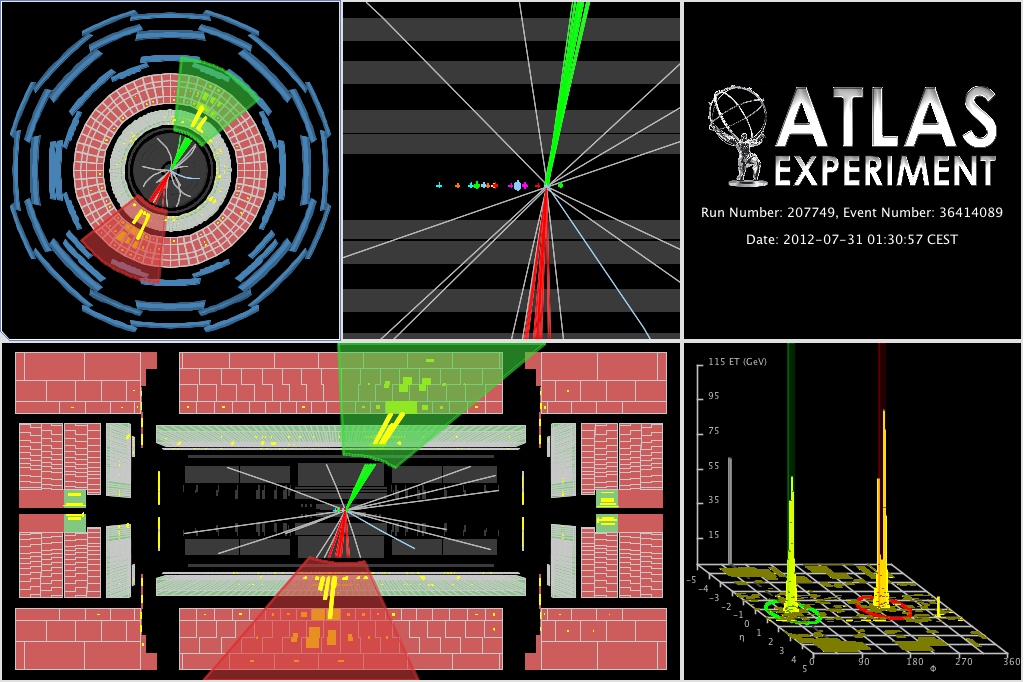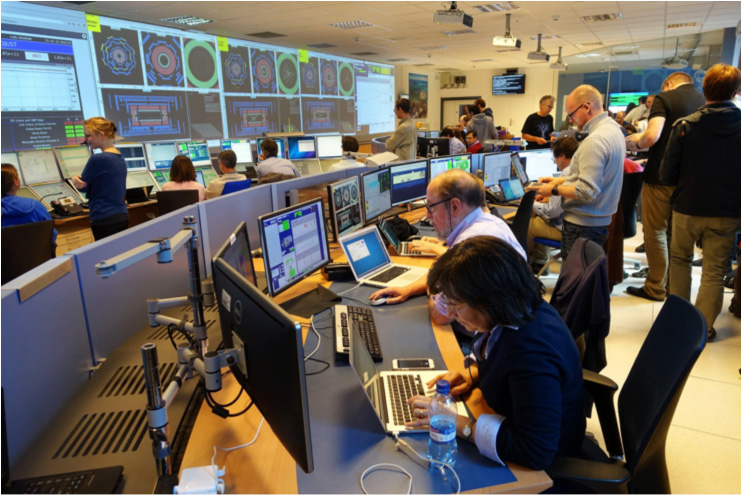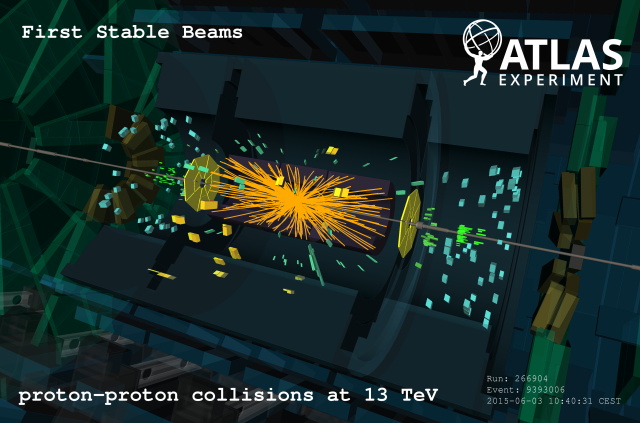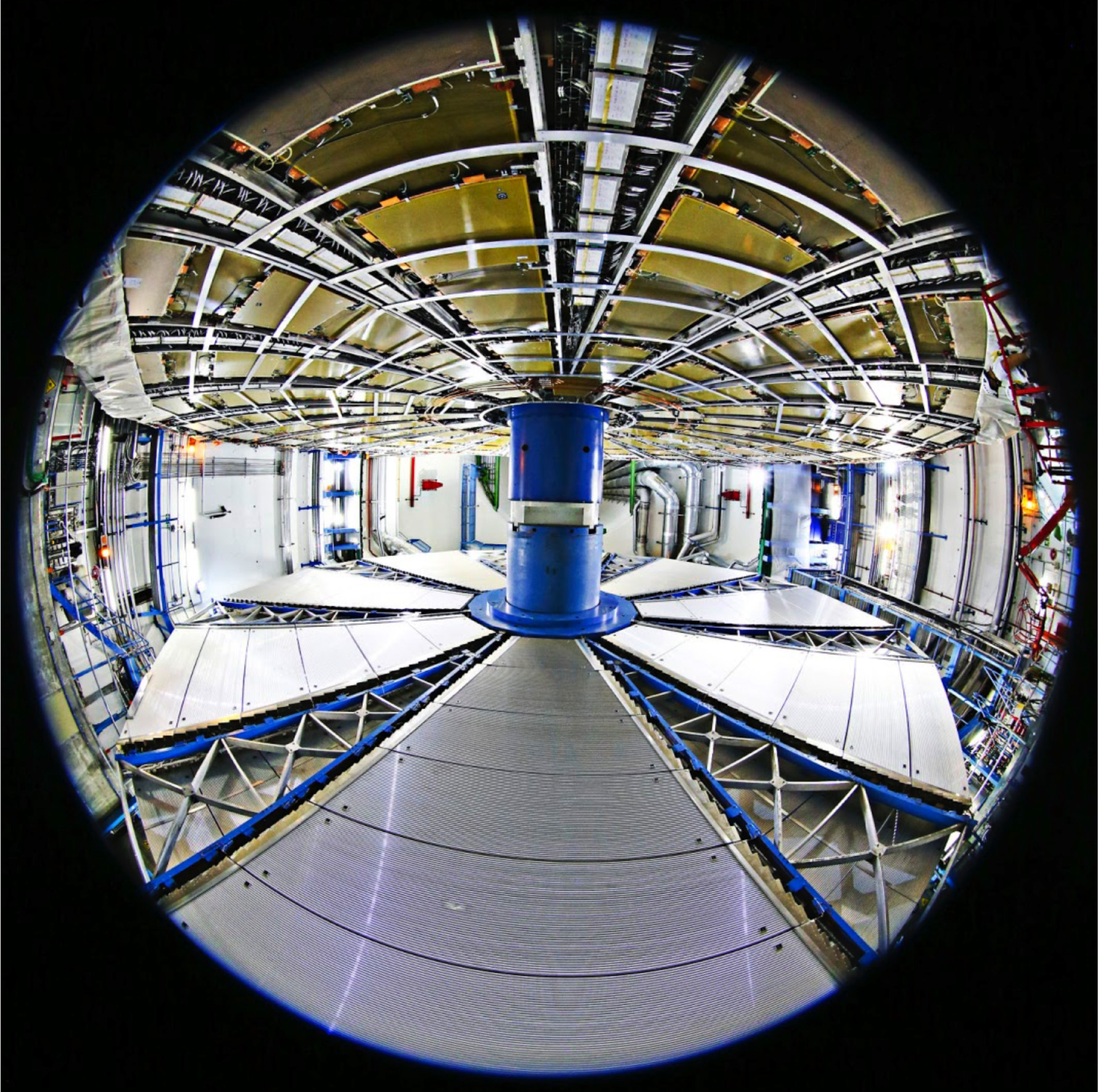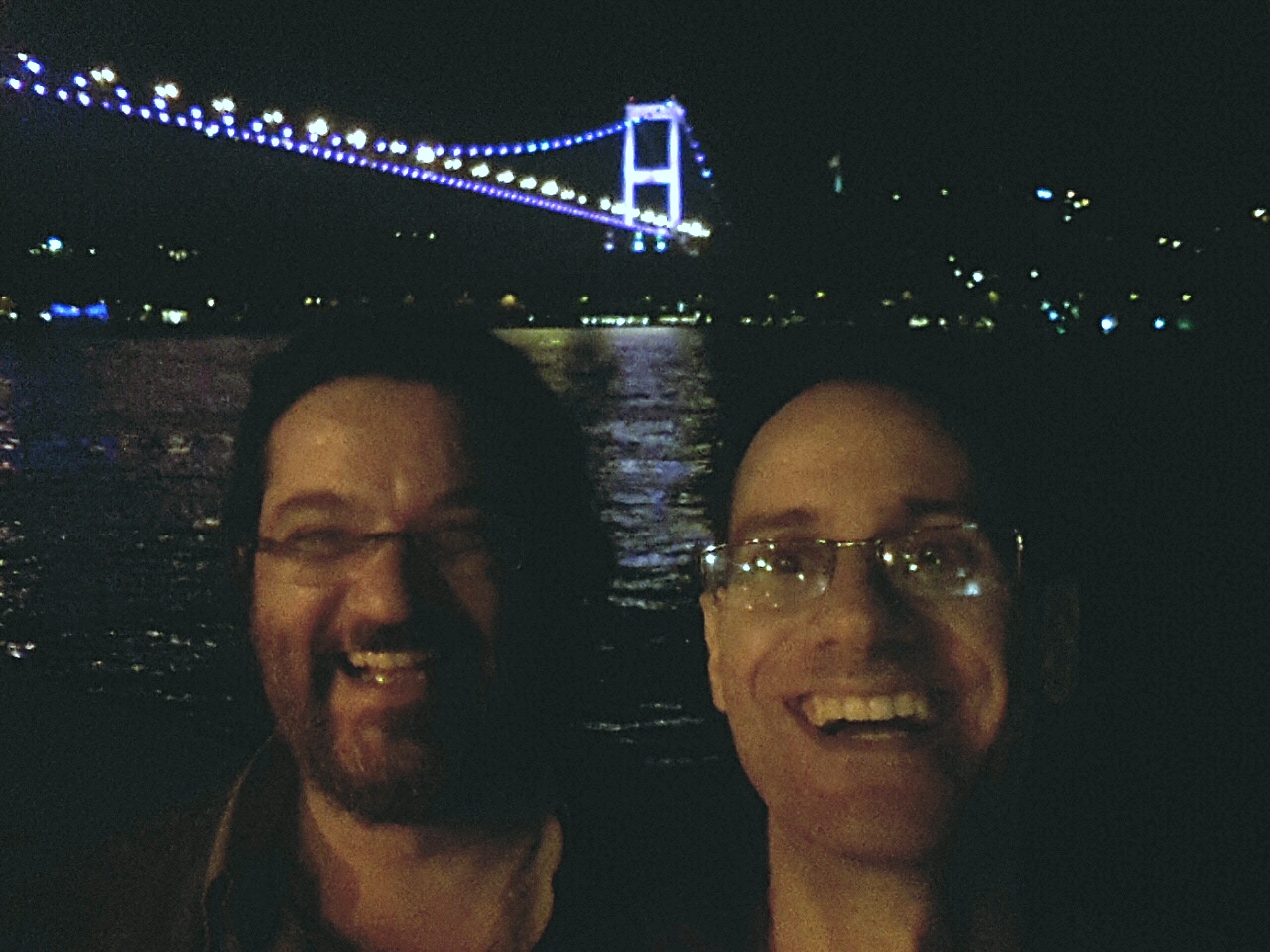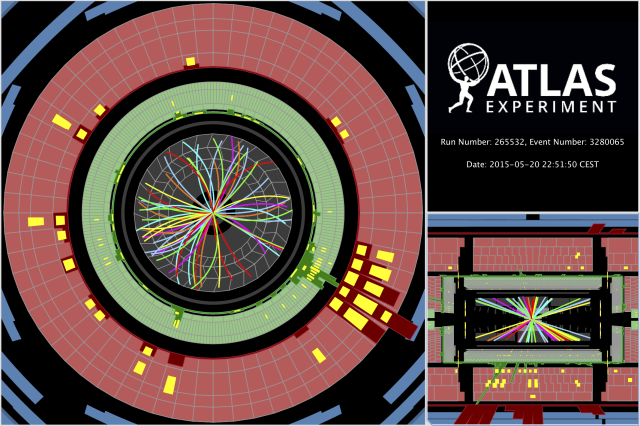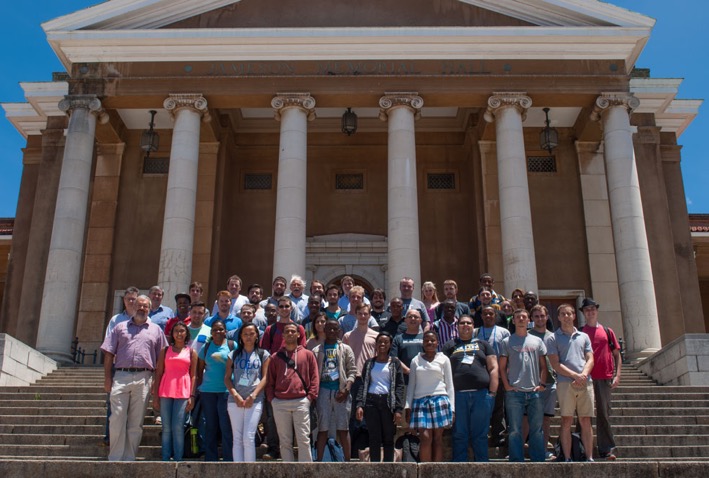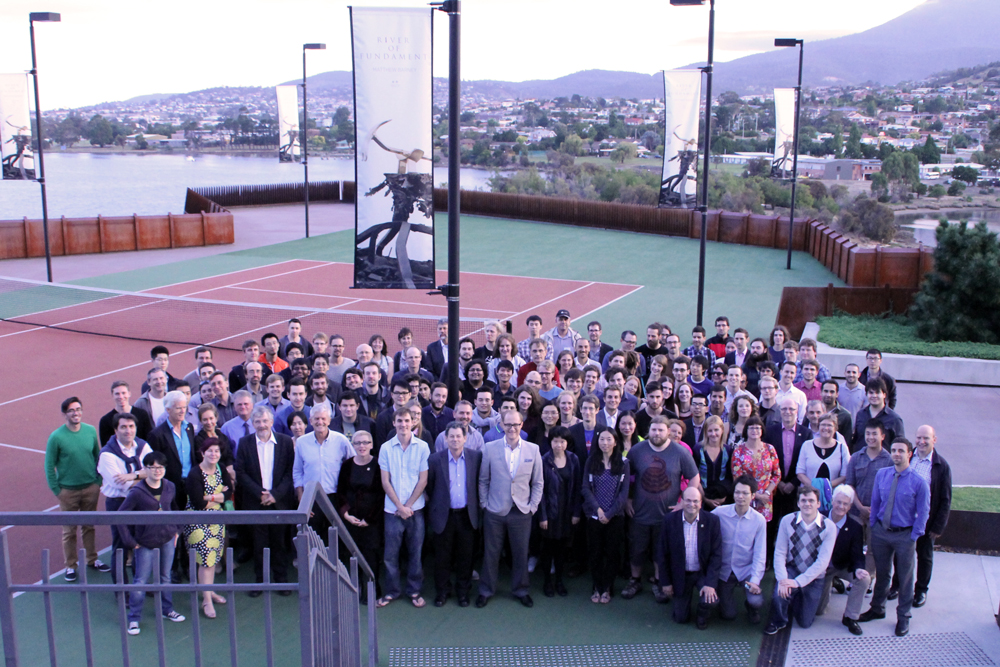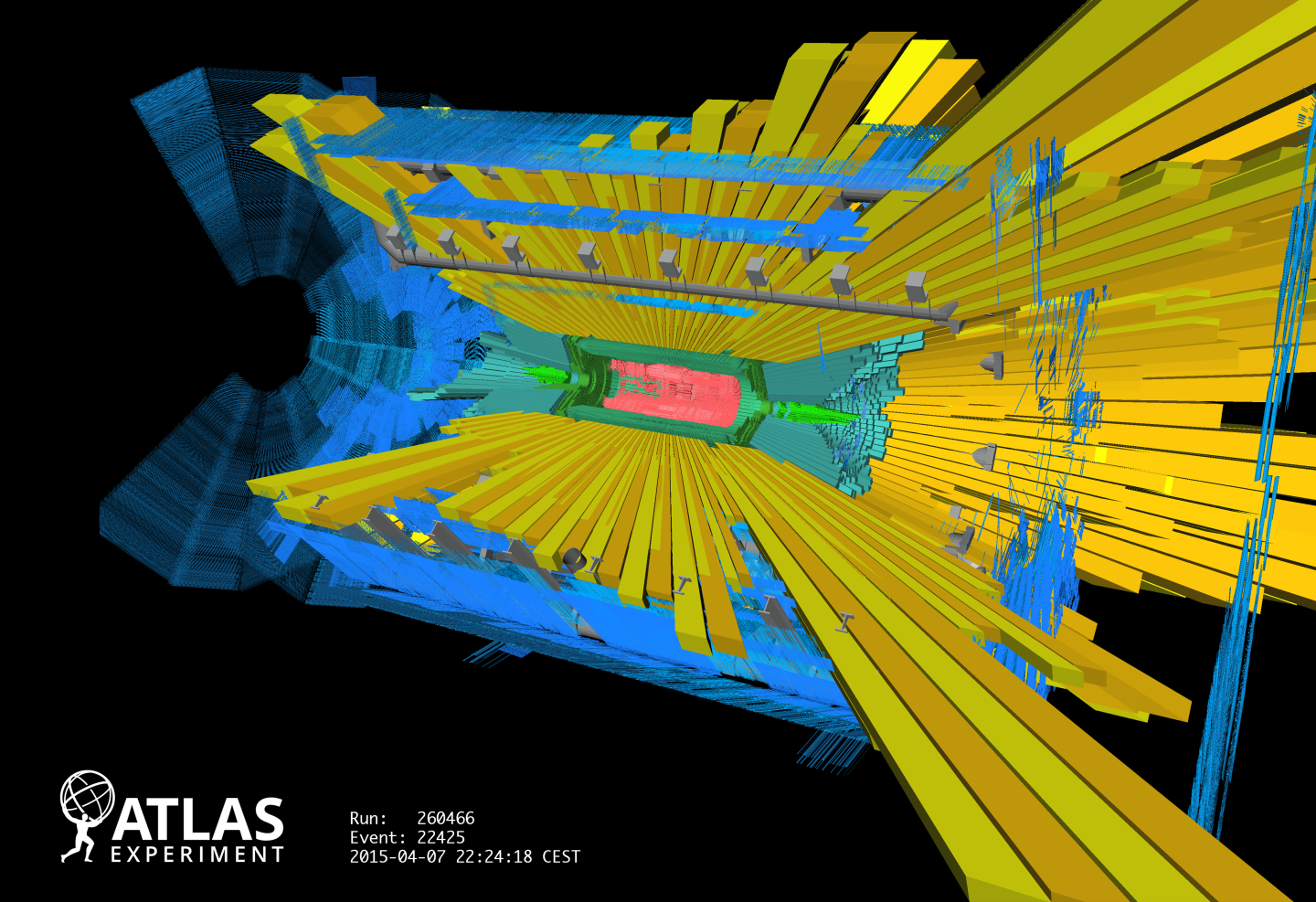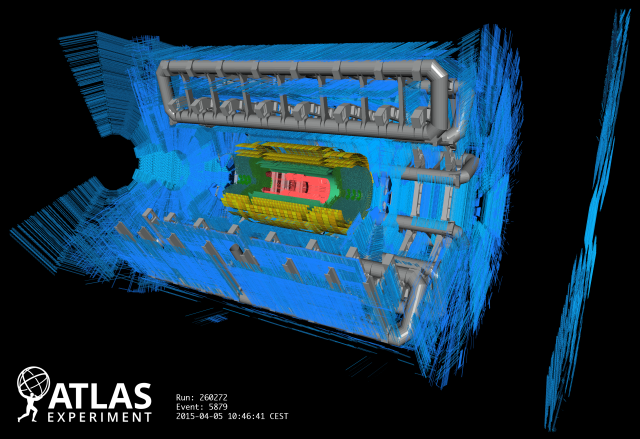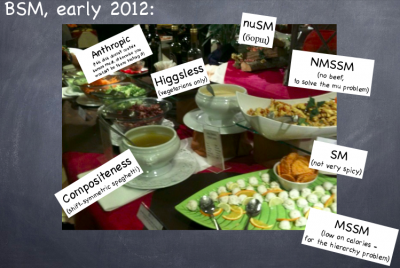From ATLAS Around the World: Working with silicon in Japan
I joined the ATLAS experiment in 2012 after graduating from the University of Tokyo, however my previous experience was completely different from collider physics. During my Master’s course, I focused on the behaviour of a kind of silicon detector operated in Geiger mode. At that time, the experiments at CERN looked like a “castle” to me.
Blog |
ATLAS awards Long Shutdown 1 achievements
The ATLAS Outstanding Achievement Awards 2015 were presented on 18 June to 26 physicists and engineers, in 11 groups, for their excellent work carried out during Long Shutdown 1 (LS1).
News |
From ATLAS Around the World: Faster and faster!
Faster and Faster! This is how it gets as soon as LS1 ends and the first collisions of LHC Run 2 approaches. As you might have noticed, at particle physics experiments we LOVE acronyms! LS1 stands for the first Long Shutdown of the Large Hadron Collider.
Blog |
Projecting pARTicles in Cuba
From Ars Electronica-style festivals to artists in residence programmes at scientific organisations, "art meets science" is a term that just keeps on trending. ATLAS visiting artist Agnes Chavez has taken a fresh look at the merging of the disciplines, adding a new one to the mix: "Art meets Science meets Education".
News |
Run 1 search for new massive bosons builds excitement for Run 2
The ATLAS experiment is now taking data from 13 TeV proton-proton collisions. The increased collision energy and rate in these Run 2 collisions will allow physicists to carry out stronger tests of many theoretical conjectures, including several theories that predict more massive versions of force-carrying particles like the W and Z bosons.
Impressions from the control room
As final preparations were made for the start of the Large Hadron Collider's (LHC) Run 2, the ATLAS Control Room was the centre of activity. Here are images from the three days that were landmark events...
News |
Setting off to new energy horizons
After a shutdown of more than two years, Run 2 of the Large Hadron Collider (LHC) is restarting at a centre-of-mass energy of 13 TeV for proton–proton collisions and increased luminosity. This new phase will allow the LHC experiments to explore nature and probe the physical laws governing it at scales never reached before.
News |
ATLAS begins recording physics data at 13 TeV
Today ATLAS and other particle physics experiments at CERN's Large Hadron Collider (LHC) began recording physics data from 13 TeV proton collisions, which allow for precision studies of the Higgs boson and other Standard Model particles, as well as the search for new particles with higher masses. The new data will bring a deeper understanding of nature.
Review before Run 2
ATLAS is ready for Run 2 of the Large Hadron Collider (LHC) where proton beams will be collided together at a higher centre of mass collision energy of 13 TeV, and reach higher luminosities than ever before.
News |
From ATLAS Around the World: The oldest observer state of CERN is no longer just observing!
If you have ever been to a bazaar in Turkey, you would know that you have to bargain hard and you have to carefully examine what you buy. Sometimes this attitude goes way too far. In our case about half a century… Turkey had been an observer state of CERN since 1961 but as of 6 May 2015.
Blog |
ATLAS records first test collisions at 13 TeV
On 20 May at around 22:24, ATLAS recorded the first 13 TeV test collisions delivered by the Large Hadron Collider. The proton collisions set a new high energy record, marking the beginning of ATLAS' journey into unexplored physics frontiers as we prepare for production data-taking, scheduled to start in early June.
News |
From ATLAS Around the World: First blog from Hong Kong
Guess who ATLAS’ youngest member is? It’s Hong Kong! We will be celebrating our first birthday in June, 2015. The Hong Kong ATLAS team comprises members from The Chinese University of Hong Kong (CUHK), The University of Hong Kong (HKU) and The Hong Kong University of Science and Technology (HKUST), under the the Joint Consortium for Fundamental Physics.
Blog |
Coordination for collisions
There is the Large Hadron Collider and then there are its experiments. When the collider is ready to circulate proton beams, the experiments have to be ready to receive them.
News |
From ATLAS Around the World: African horizons
It’s great being back at CERN and being able to immerse myself in the tangible atmosphere of excited anticipation for the first collisions at 13 TeV this June. I am a South African, usually based in Durban — a city currently afflicted with xenophobically motivated riots and rolling blackouts. Being at CERN is really a different world right now, to a greater extent than usual.
Blog |
First collisions at injection energy
On the morning of 5 May 2015, ATLAS recorded the first scheduled proton beam collisions since the Large Hadron Collider and its experiments started up after two years of maintenance and repairs.
News |
From ATLAS Around the World: A view from Down Under
While ATLAS members at CERN were preparing for Run 2 during ATLAS week, and eagerly awaiting the beam to re-circulate the LHC, colleagues “down under” in Australia were having a meeting of their own. The ARC Centre of Excellence for Particle Physics at the Terascale (CoEPP) is the hub of all things ATLAS in Australia.
Blog |
Splashes for synchronization
ATLAS uses "beam splash" events to provide simultaneous signals to large parts of the detector, and verify that the readout of different detectors elements are fully synchronized. After the first 2015 Large Hadron Collider beam circulation on Easter Sunday, a run dedicated to taking beam splash events was set up on Tuesday evening, 7 April.
News |
From ATLAS Around the World: Preparing for Run 2 from Colombia
After a two-year stay at CERN, I moved back to Colombia in 2012. Being involved in ATLAS and working from Colombia has been a great experience for me; I get to continue contributing to the physics searches and also do other things like teaching, giving seminars, and doing outreach activities.
Blog |
Shots from the Long Shutdown
As ATLAS gears up to record data from proton collisions delivered by the Large Hadron Collider (LHC) at an unprecedented energy level, here are glimpses from the last two years of preparations.
News |
A week of firsts
The annual conference, Moriond, is in its 50th edition this year, and I’ve had the pleasure of coming down to Aosta in Italy to participate in the QCD session; for the first time. It’s actually a week of firsts for me. The conference organizers described it as being in a kind of “QCD confinement”.
Blog |
ATLAS is ready and waiting for collisions
The first long shutdown of the Large Hadron Collider has now ended, after two years of intense but careful activity refurbishing and improving many aspects of ATLAS, mirroring the work to prepare the LHC for collisions at the new energy of 13 TeV.
Moriond Electroweak: physics, skiing and Italian food
If you’re a young physicist working in high energy physics, you realize very soon in your career that “going for Moriond” and “going to Moriond” are two different things, and that neither of the two means that you’re actually going to Moriond. This year’s “Moriond Electroweak” was held in the Italian mountain resort of La Thuile, and had a special significance.
Blog |
ATLAS further verifies Standard Model coupling/mass relationship of Higgs boson
The discovery of a Higgs Boson in 2012 by the ATLAS and CMS experiments marked a key milestone in the history of particle physics. It confirmed a long-standing prediction of the Standard Model, the theory that underlines our present understanding of elementary particles and their interactions.
The scalar boson
The ATLAS experiment has released results confirming that the Higgs boson has spin 0 (it is a so-called “scalar”) and positive parity as predicted by the Standard Model, making it the only elementary scalar particle to be observed in nature.
In search of rare Higgs boson production with top quarks
In proton-proton collisions, several processes can lead to the production of a Higgs boson. The most “frequent” process (which is about one collision in four billion!) is the fusion of two gluons, contained in the initial protons, into a Higgs boson through a “top-quark loop”. Least frequent is a mode where the Higgs boson is produced in association with a pair of top-quarks.

